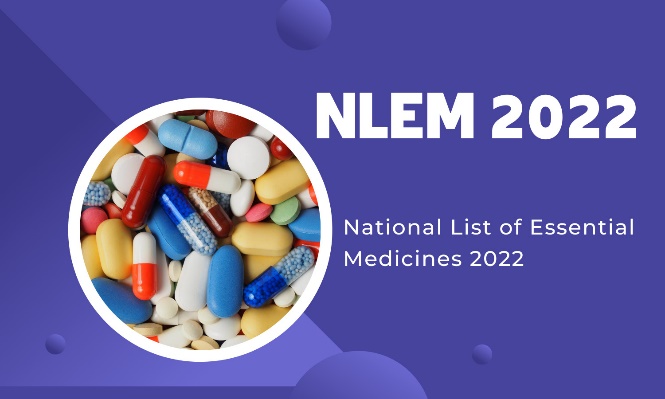Description

Disclaimer: Copyright infringement not intended.
Context
- Twenty-six drugs, including the common gastrointestinal medicines ranitidine and sucralfate, have been excluded from the National List of Essential Medicines (NLEM).
Essential medicines
- Essential medicines, as defined by the World Health Organization (WHO), are the medicines that "satisfy the priority health care needs of the population".
- These are the medications to which people should have access at all times in sufficient amounts. The prices should be at generally affordable levels.
- Since 1977, the WHO has published a model list of essential medicines. The concept of essential medicines, first introduced by WHO in 1977, has now been adopted by many countries, non-governmental organizations and international non-profit supply agencies.
India’s National List of Essential Medicine (NLEM)
- A total of 384 drugs find place on the list. Twenty-six from the previous list have been dropped. The medicines have been categorised into 27 therapeutic categories. The first NLEM was compiled in 1996 and was revised thrice in 2003, 2011, and 2015.
- The drugs in the NLEM are included in the schedule category and their price is regulated by the National Pharmaceutical Pricing Authority.

Deletion of drugs from the list
- According to a Health Ministry official, drugs deleted from the NLEM include medicines banned in India and those having reports of concerns on the safety profile.
- Drugs also go off the list if medicines with better efficacy or favourable safety profile and better cost-effectiveness become available. Also, if the disease burden for which a medicine is indicated is no longer a national health concern, it is deleted from the NLEM. In case of antimicrobials, if the resistance pattern has rendered them ineffective, the drugs are taken off the list.
- The new list includes four drugs that are still under patent — bedaquiline and delamind used in the treatment of multiple drug-resistant tuberculosis, dolutegravir used to treat human immunodeficiency virus (HIV) infection, and daclatasvir used in treating viral infections such as Hepatitis C.
Other facts
- No drugs used specifically for the treatment of COVID-19 have been made part of the list as the committee in charge of the list is of the view that the clinical trials to check the efficacy of the drugs are not yet conclusive.
- Several antibiotics, vaccines and anti-cancer drugs are set to become more affordable with their addition to the list. Ivermectin, mupirocin and nicotine replacement therapy have been added.
- Endocrine medicines and contraceptives fludrocortisone, ormeloxifene, insulin glargine and teneligliptin have been added to the list. Montelukast, which acts on the respiratory tract, and ophthalmological drug latanoprost figure in the list.
- Cardiovascular medicines dabigatran and tenecteplase also find place in the list, as also medicines used in palliative care.
Conclusion
- The primary purpose of the NLEM is to promote rational use of medicines considering the three important aspects — cost, safety and efficacy. It also helps in optimum utilisation of healthcare resources and budget; drug procurement policies; health insurance; improving prescribing habits; medical education and drafting pharmaceutical policies.
Way Ahead
- The need to enhance awareness regarding antimicrobial resistance (AMR) which is emerging as a big challenge for our scientists and community and we need to create awareness in the society about AMR.
- The pharmaceutical industry in India was a strategic sector that was recognised around the world for providing affordable and high-quality medicines.
- The release of the NLEM, 2022, comes after a long gap of seven years, when it is recommended for an NLEM to be revised more frequently, every two-three years, to be responsive to changing health needs.
- In respect of cancer, it is disappointing that more of the highly priced, effective treatments for various cancers have not been included in the list. It is positive that the diabetes section has been expanded to include teneligliptin and insulin glargine. However, there was a need to include more synthetic insulins and other classes of oral antidiabetics keeping in view the diabetes epidemic in the country.
Read: https://www.iasgyan.in/daily-current-affairs/healthcare-sector-in-india
https://iasgyan.in/daily-current-affairs/primary-health-care-in-india
https://epaper.thehindu.com/Home/ShareArticle?OrgId=GHMA984PD.1&imageview=0











